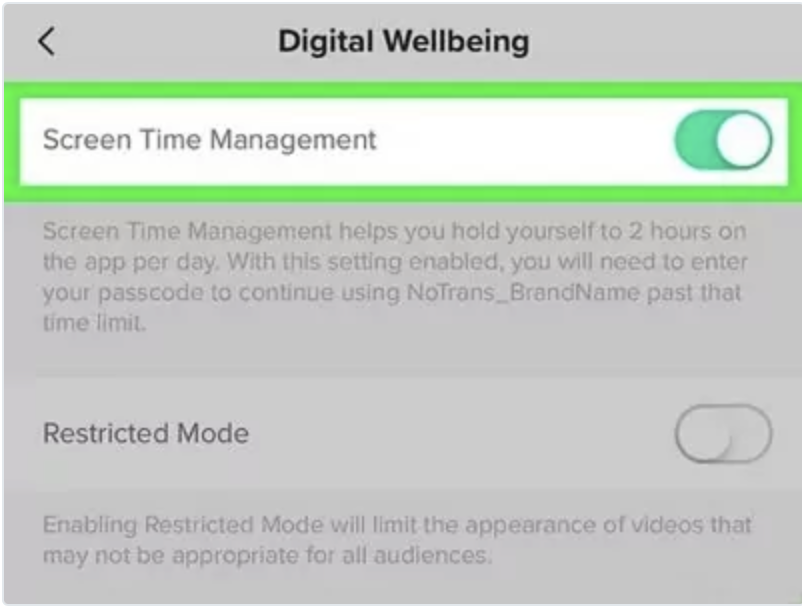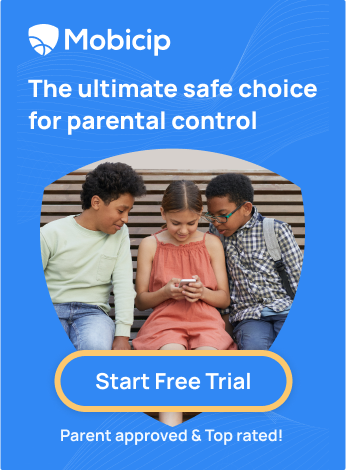What Every Parent Should Know About TikTok’s Hidden Risks

TikTok has rapidly become a cultural phenomenon in many countries that have not banned the app, especially among teenagers. Launched as Douyin in China in 2016 (hence the stylized d as its logo) and later introduced globally as TikTok in 2017, the app’s name itself, echoing the sound of a ticking clock, emphasizes its focus on brief, snappy videos.
In just five years, TikTok reached one billion monthly active users, which took other social media giants like Facebook, Instagram, and YouTube much longer to achieve. While TikTok provides a platform for creativity and global connection, the app’s slogan, “Make every second count,” has become a troubling reality for many teens who spend nearly every waking second on the app. Today, TikTok boasts a significant teenage user base, with a Pew Research Center survey reporting that 64% of US teens aged 13 to 17 use the app, and 17% of them are on it “all the time.”

Data from Pew Research
Let’s look at why parents must be concerned about TikTok and how they can protect their children from the harmful effects of this app.
Hidden Risks of TikTok
TikTok’s platform, featuring the “For You” and “Following” feeds, is designed to engage users by recommending content tailored to their interests. While TikTok aims to “inspire creativity and bring joy,” the platform has become a potential minefield for children, exposing them to addictive and inappropriate content.
Exposure to Inappropriate Content
TikTok’s terms of service require users to be at least 13 years old, with accounts for those aged 13-15 set to private by default. Dr Leonard Sax, practicing family physician and the author of four books for parents, known for The Collapse of Parenting, says, “No child under 13 should be on any social media, including TikTok. And I would add that many 13-year-olds aren’t ready. TikTok offers a curated version of their app for under-13s. That watered-down version is designed to fuel interest in the grown-up version. Twelve-year-olds don’t like to be on the kiddie version of anything. And tweens quickly realize they can easily access the full version if they lie about their age.”
Age verification is easily bypassed, allowing younger children to access content intended for older users. Although TikTok claims to filter inappropriate content, its algorithms are not foolproof, and suggestive or mature material often slips through.
The app’s reliance on music and video content leads to frequent exposure to profanity, suggestive clothing, and dancing. TikTok’s algorithm can latch onto a single instance of viewing harmful content and continually serve similar material. This creates a cycle where children are exposed to increasingly inappropriate or harmful content, even if they initially encountered it by accident.
An anonymous mother on MamaMania shares, “I won’t allow my 10-year-old daughter on TikTok because anyone can view the videos she posts. She could also come across inappropriate or explicit content. The risk just isn’t worth it.”
Viral trends on TikTok have also raised concerns, with some encouraging dangerous behaviors among minors. Recent research from the Institute for Strategic Dialogue (ISD) reveals that TikTok hosts easily accessible harmful content for kids, including videos promoting white supremacy, Holocaust denial, terrorism, and dangerous viral challenges encouraging self-harm and risky behaviors like choking and playing with electricity. Extremist content creators successfully use TikTok’s tools to spread hate and evade takedowns.
Cyberbullying and Online Predators
Cyberbullying on TikTok manifests through harassment, threats, verbal abuse, blackmail, and social engineering tactics. Predators may gain a child’s trust to extract personal information, leading to further exploitation, including blackmail or grooming for sexual abuse. Unlike traditional bullying, cyberbullying on TikTok can involve both peers and strangers globally, exploiting the internet’s anonymity to target children with cruel comments, often about their appearance or actions. This can severely impact teenagers’ self-esteem, leading to anxiety and depression.
A prevalent form of cyberbullying on TikTok is through hurtful comments on videos. The platform’s global reach means bullies can be classmates or strangers from anywhere, making it challenging for victims to escape. In severe cases, live-streamed or recorded videos of harassment can be widely shared, with viewers sometimes encouraging the behavior, compounding the victim’s distress through public humiliation. In 2022, TikTok received more removal requests from Australia’s eSafety commissioner for posts bullying children than any other platform.
Victims of cyberbullying frequently experience severe emotional impacts, including anxiety and depression, and some may face threats to their safety. This is particularly concerning as research shows that cyberbullying victims are significantly more likely to experience suicidal thoughts. A 30-year-old Malaysian woman was found dead in an apparent suicide this year (2024), just a day after she filed a police report about online threats she had received.
In addition to cyberbullying, TikTok users may encounter various scams, such as romance scams, phishing schemes, fake apps, and deceptive investment opportunities, further complicating online safety.

Privacy and Data Security Concerns
TikTok collects extensive data on its users, including personal information like usernames, passwords, emails, phone numbers, and birthdates when an account is created. The app retains profile photos and videos, offering insight into users’ appearances. On April 4, 2023, the UK Privacy Regulator fined TikTok for violating GDPR by collecting data from children under 13 without parental consent.
Beyond these basics, TikTok monitors user behavior closely—tracking language preferences, video interactions, comments, and saved content to build detailed profiles for customizing the ‘For You’ feed and recommendations.
The platform also gathers technical data from devices, including IP addresses, device IDs, and operating system details, which helps TikTok understand user access patterns and approximate locations. For example, in December 2022, ByteDance (the owner of TikTok) used TikTok data to spy on journalists by tracking their IP addresses. If GPS tracking is enabled, TikTok can access more precise location data. Additionally, TikTok may collect data from third-party platforms like Facebook and track in-app purchases, possibly requiring proof of identity for certain features.
While TikTok uses this information to enhance user experience, it also shares data with business partners such as Facebook and Google, service providers, payment processors, and advertisers. User information may be shared with law enforcement if necessary. Data breaches and hacking can also cause leaks of personal and sensitive data. In June 2024, hackers targeted TikTok accounts with malicious links, compromising several high-profile users. Despite security measures, TikTok continues to face significant data privacy challenges. This extensive data collection and sharing raises concerns about privacy and security, especially for younger users.
Impact on Mental Health
Concerns about social media’s mental health impact have intensified, particularly for adolescents who seek community and validation online. While TikTok can provide connection, excessive use, especially among those with social anxiety or depression, may reduce real-world interactions, worsening feelings of isolation, anxiety, and depression. Engaging with the world in healthy ways is crucial for youth development, and too much time online can exacerbate negative emotions and social withdrawal.
Self-Esteem and Body Image Issues
Social media platforms like TikTok foster a “culture of comparison,” which can be particularly damaging for young people concerned about their self-image. Adolescents often compare themselves to others based on likes, followers, or friends, leading to feelings of inadequacy and increased depression. Unrealistic portrayals of physical appearance, especially when perceived as natural and unedited, can significantly affect young women’s body image. Research published in the Journal Body Image shows that even brief exposure to content reflecting unattainable beauty standards negatively impacts body image. These standards often include narrow ideals such as long legs, toned abs, and flawless skin.
TikTok’s focus on short-form videos often showcases enhanced and edited versions of appearance ideals, making it a particularly appearance-focused platform. Studies have found that exposure to such content, perceived as unedited, can lead to increased dissatisfaction with one’s appearance and negative social comparisons. This dissatisfaction is linked to adverse mental health outcomes, including depression and eating disorders.
A study titled “Deadly by Design” by the Center for Countering Digital Hate (CCDH) reports that TikTok recommends self-harm and eating disorder content to users as young as 13 within minutes of joining the platform and pausing briefly once on videos about body image and mental health. The study identified 56 hashtags hosting eating disorder videos with over 13.2 billion views, highlighting the app’s potential to expose vulnerable children to harmful content.
Addiction and Screen Time
TikTok’s addictive nature is largely driven by its design and advanced algorithms that maximize user engagement. According to 2021 leaked documents, TikTok prioritizes user view time over traditional metrics like clicks. The platform uses an algorithm to create a personalized feed, moving away from chronological content and promoting extreme or attention-grabbing videos, which fuels constant engagement.
Key features like infinite scrolling and variable rewards enhance TikTok’s addictive quality. Users average 46 minutes daily on the app, often watching up to 180 short videos. The “For You” page, driven by AI, continuously adapts content based on user interactions, creating a “flow state” where users lose track of time.
Neurologically, TikTok’s design stimulates the brain’s reward system using a variable reward pattern similar to gambling. Each swipe and new video delivers unpredictable rewards, triggering dopamine release, which reinforces the behavior and creates a craving for more. This cycle mirrors the unpredictability of slot machines, making TikTok’s design particularly effective at engaging users. The platform’s features exploit neurological vulnerabilities, posing challenges for moderating usage and addressing social media addiction.
Safety Measures for Parents
TikTok has taken several steps to enhance safety for younger users, introducing notable features in March 2023 to improve user protection. These measures include a daily 60-minute screen time limit for teens, though they can extend this limit if desired. Additional safety features include setting accounts to private by default, disabling the ability to host live streams, and restricting specific functionalities for users aged 13-15, such as duet and stitch features, direct messaging, and video downloads. For this age group, TikTok also limits who can comment on their posts and enforces push notification curfews to minimize exposure late at night. Parents can further safeguard their children by using TikTok’s “Family Pairing Mode,” which offers control over content and privacy settings. This mode allows parents to manage screen time, restrict content types, and limit direct messaging.
TikTok’s parental control measures, such as the recently introduced 60-minute screen time limit for users under 18, often fall short of providing effective safeguards. While these limits curb excessive usage, they function more as suggestions than strict controls. Teens can easily bypass these restrictions by simply entering a passcode, allowing them to continue using the app without meaningful intervention. Additionally, the option for users aged 13 to 17 to opt out of the default limit or to set their own limits and bypass them weakens the intended protection. These measures, while appearing proactive, may not sufficiently address the growing concerns about social media’s impact on children’s mental health or satisfy broader worries about TikTok’s influence.
While TikTok has made progress, proactive management by parents is crucial. Regularly reviewing and adjusting settings helps ensure continued safety. Moreover, external parental control apps like Mobicip can provide additional oversight and control. Mobicip offers tools to monitor and restrict app usage, adding another layer of protection.
Beyond technical measures, maintaining open communication about internet safety is essential. Parents should discuss with their children the importance of keeping their accounts private, being cautious about content sharing, and understanding that seemingly temporary content might have long-term consequences. By combining TikTok’s built-in features, external tools like Mobicip, and ongoing dialogue, parents can better protect their children in the digital space.
Setting Up Parental Controls
TikTok has introduced several parental controls to address these concerns, but it’s crucial to set them up correctly for maximum protection.
1. Screen Time Management
TikTok allows you to set daily screen time limits between 40 and 120 minutes. Once this limit is reached, a video reminder will prompt users to take a break. To set this up:
Go to Profile > Settings

Select Digital Wellbeing > Screen Time Management
Choose a time limit and enable it


2. Restricted Mode
This feature filters out inappropriate content. To activate Restricted Mode:
Open TikTok and go to Profile
Tap the Three Dots, then Privacy and Settings
Select Digital Wellbeing > Restricted Mode
Set and confirm a passcode

3. Family Pairing
TikTok’s Family Pairing lets parents link their accounts to their children’s, allowing remote management of privacy settings and content restrictions. This feature also helps control screen time and direct messages.

Using Mobicip to Manage and Monitor TikTok
Mobicip Parental Controls features work alongside TikTok’s built-in tools, providing an extra layer of safety and ensuring a balanced, secure TikTok experience for your child.
- Install the Mobicip app on both your device and your child’s devices. Log in or create an account to get started.
- Setup of Parental Controls:
- Access the “Parental Controls” section on the Mobicip dashboard.
- Select the device you want to monitor and add TikTok to the list of apps to manage.

-
Content Filtering:
- Navigate to the “Content Filtering” section and customize filters to block TikTok App and web access.

-
Activity Monitoring:
- Use Mobicip’s activity monitoring tools to review your child’s TikTok activity, including the videos they watch and interact with.
- Regularly check these reports to stay informed about their online behavior and adjust controls as needed.

Educating Teens About Online Safety
Educating teens about online safety is crucial in today’s digital age. Begin by fostering open communication and discussing the importance of maintaining privacy online. Teach them the significance of using strong, unique passwords and the risks associated with sharing personal information on social media platforms, such as locations and contact details. Encourage your teen to be cautious about the information they post and to think critically before sharing anything online.
Talk about the potential dangers of interacting with strangers online and the importance of identifying and reporting suspicious or harmful behavior. Explain how to use privacy settings on social media platforms to control who can view their posts and personal information. Stress the importance of being mindful of digital footprints, as once something is posted online, it is likely permanent and can come to bite them back later.
Involve your teen in conversations about cybersecurity threats such as phishing scams and malware, and teach them how to identify and avoid them. Using practical examples helps them understand the impact of their online actions on their reputation and future opportunities. Regular discussions and setting clear guidelines can empower teens to navigate the online world safely and responsibly.
FAQ
Can you put parental controls on TikTok?
Yes, TikTok provides parental controls through the “Family Pairing” feature, allowing you to manage settings like screen time, content restrictions, and direct messaging. To set this up, go to the TikTok app’s profile section, tap the three dots, select “Family Pairing,” and follow the prompts. For enhanced control, consider using Mobicip, which offers additional features for monitoring and managing your child’s TikTok usage alongside other digital activities. Mobicip can help you enforce screen time limits, filter content, and track your child’s online behavior.
How do I make TikTok safe for my child?
To make TikTok safer for your child:
- Set their account to private and use TikTok’s “Family Pairing” to manage screen time, content restrictions, and direct messaging.
- Enable “Restricted Mode” to filter out inappropriate content.
- For extra protection, use Mobicip to complement TikTok’s built-in controls.
Mobicip provides comprehensive monitoring features, allowing you to enforce screen time limits, block unwanted content, and track your child’s activity across multiple apps and devices. This offers an added layer of safety.
What age is appropriate for TikTok?
TikTok is for users aged 13 and older. The app’s terms of service specify this age limit to protect younger users from inappropriate content. For users aged 13 to 15, TikTok offers additional safety features, but parents need to stay involved. Using Mobicip can further help ensure that your child’s TikTok experience remains appropriate. Mobicip’s tools can provide additional monitoring and filtering options to ensure that content is suitable for your child’s age and maturity level.
How can I monitor my child’s TikTok activity?
To monitor your child’s TikTok activity, utilize TikTok’s “Family Pairing” feature to set screen time limits, control content, and manage interactions. For more comprehensive monitoring, use Mobicip, which provides detailed insights into your child’s TikTok activity and other digital habits. Mobicip allows you to track app usage, enforce content filters, and set screen time limits across various platforms, offering a more robust solution for keeping tabs on your child’s online behavior and ensuring a safer digital experience.





